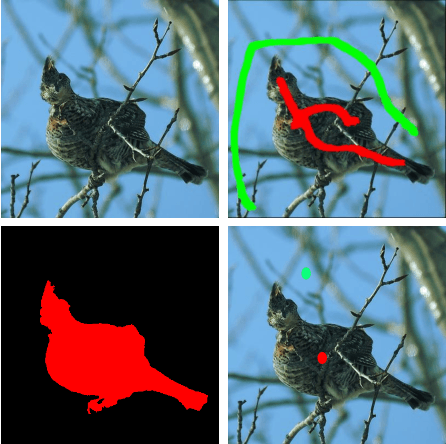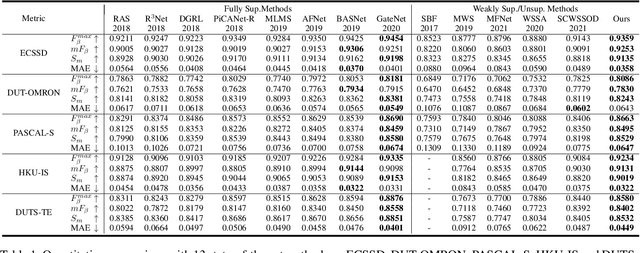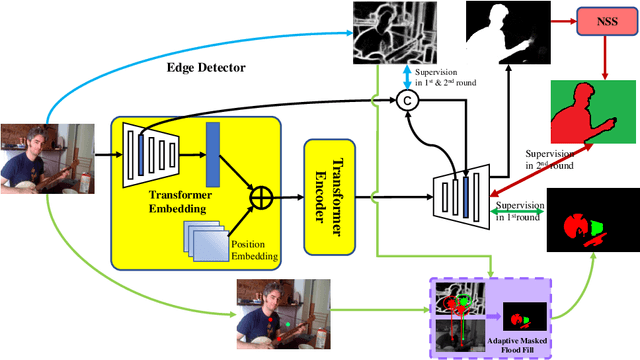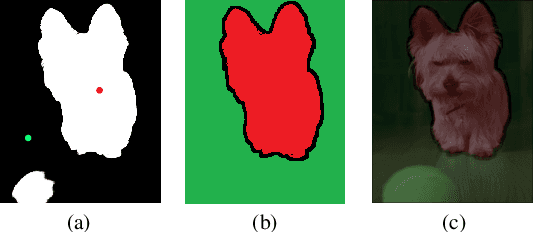Weakly-Supervised Salient Object Detection Using Point Supervison
Paper and Code
Mar 22, 2022



Current state-of-the-art saliency detection models rely heavily on large datasets of accurate pixel-wise annotations, but manually labeling pixels is time-consuming and labor-intensive. There are some weakly supervised methods developed for alleviating the problem, such as image label, bounding box label, and scribble label, while point label still has not been explored in this field. In this paper, we propose a novel weakly-supervised salient object detection method using point supervision. To infer the saliency map, we first design an adaptive masked flood filling algorithm to generate pseudo labels. Then we develop a transformer-based point-supervised saliency detection model to produce the first round of saliency maps. However, due to the sparseness of the label, the weakly supervised model tends to degenerate into a general foreground detection model. To address this issue, we propose a Non-Salient Suppression (NSS) method to optimize the erroneous saliency maps generated in the first round and leverage them for the second round of training. Moreover, we build a new point-supervised dataset (P-DUTS) by relabeling the DUTS dataset. In P-DUTS, there is only one labeled point for each salient object. Comprehensive experiments on five largest benchmark datasets demonstrate our method outperforms the previous state-of-the-art methods trained with the stronger supervision and even surpass several fully supervised state-of-the-art models. The code is available at: https://github.com/shuyonggao/PSOD.
 Add to Chrome
Add to Chrome Add to Firefox
Add to Firefox Add to Edge
Add to Edge